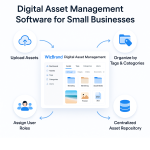Limited Time Offer!
For Less Than the Cost of a Starbucks Coffee, Access All DevOpsSchool Videos on YouTube Unlimitedly.
Master DevOps, SRE, DevSecOps Skills!
What is PHP?

Are you curious in PHP’s definition and operation? There’s nowhere else to look! The ins and outs of PHP will be covered in this article, along with its main applications, features, installation and configuration procedures, and workflow.
What is the top use cases of PHP?
Hypertext Preprocessor, or PHP, is a well-liked server-side programming language for web development. Top usage cases for it consist of:
- Creating dynamic websites: PHP is capable of producing dynamic content, including interactive forms and user-specific webpages.
- Building e-commerce websites: PHP is capable of managing online payments and transaction handling, including adding products to a shopping cart.
- Creating content management systems: PHP is capable of handling website content administration tasks including adding, modifying, and removing pages.
What are the features of PHP?

A number of characteristics of PHP make it a well-liked option for web development, including:
- Simple and easy to learn: PHP features an easy-to-understand syntax that is straightforward.
- Cross-platform compatibility: PHP is compatible with a number of operating systems, including Mac, Linux, and Windows.
- Large library: To improve its usefulness, PHP comes with a large library of extensions and functions.
- Security: PHP comes with built-in safeguards against SQL injection and cross-site scripting (XSS) threats.
What is the workflow of PHP?
The workflow of PHP typically involves the following steps:
- A web page is requested by a user from a server.
- The PHP interpreter receives the request from the server.
- After processing the PHP code, the PHP interpreter outputs HTML.
- The user’s browser receives the HTML output from the server.
- The web page is seen in the user’s browser.
How PHP Works & Architecture?

PHP has a modular design in which a single task is carried out by each module. While other modules can be added to give extra capabilities, such database connectivity and encryption, the core of PHP is in charge of parsing and executing PHP code.
PHP may handle requests and provide dynamic content in tandem with a web server, such Apache or Nginx.
How to Install and Configure PHP?
The procedure of installing and configuring PHP is simple. The general stages are as follows:
- Utilize the official website to download the PHP binaries.
- Put the PHP binaries onto your computer.
- Set up your web server so that PHP may run on it.
- To verify the installation of PHP, generate a basic PHP file and launch it in your web browser.





